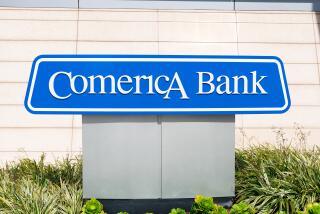Oil and Farm States Hard Hit : 138 Banks Failed in U.S. Last Year, Regulators Say
- Share via
WASHINGTON — A post-Depression record 138 U.S. banks collapsed during 1986, federal regulators say, with most of the failed institutions in economically troubled oil and farm states.
And nearly one of every 10 banks nationwide is considered to be in some kind of financial trouble by the Federal Deposit Insurance Corp.
The agency said 1,484 banks as of mid-December were on its list of troubled institutions needing special monitoring out of the 14,948 banks whose deposits are insured by the FDIC.
During 1986, Texas had 26 bank failures, the most of any state, followed by 16 in Oklahoma, 14 in Kansas, 10 in Iowa and 9 in Missouri.
California and Louisiana had eight failures each; Colorado and Wyoming, seven each, and Nebraska, six.
“Economic performance has not been favorable for all sectors of the economy,” FDIC Chairman L. William Seidman noted in congressional testimony last year. “The agricultural and energy sectors have been exceptionally weak and are in the midst of a painful adjustment process.
“These adjustments are not confined to the non-financial firms,” he said. “The banks that serve these sectors are affected as well.”
Unable to Diversify
Seidman said many banks were reluctant or unable to diversify their lending and thus were more vulnerable to economic woes in oil and farming.
The 1986 failures marked a six-year surge of bank collapses. The 138 failures compared to 120 in 1985, 79 in 1984, 48 in 1983, 42 in 1982 and 10 in 1981.
The figure also was the greatest number of bank failures since the FDIC was created in 1934. During the late years of the Great Depression, from 1934 to 1939, bank failures averaged 67 per year, or half the current rate.
Still, the figure was far below the early years of the Depression, when accounts were not insured and rumors could spark bank runs by people frantic to withdraw their deposits. An average of 2,277 banks failed each year from 1930 to 1933, with an astounding 4,000 failures in 1933 itself, according to the FDIC.
Meanwhile, the Federal Home Loan Bank Board reported that 21 savings and loan associations closed their doors in 1986, while 43 were ordered to change management and 22 were forced into mergers with stronger partners.
In addition, about 250 thrifts out of some 3,250 whose deposits are insured by the Federal Savings and Loan Insurance Corp. are in trouble, said board spokesman Pat McKelvey.
“About 79% of savings and loans are prosperous and will continue to be so,” McKelvey said. “But we have some real dandies in the other 21%.”
Record Closings of Thrifts
The 21 thrift closings also set a modern record. Ten thrifts collapsed in 1985, nine in 1984 and six in 1983. Before that, no more than one thrift a year had foundered since the Depression.
McKelvey said most of the thrifts in serious trouble got away from their traditional role of lending home mortgage money and moved into more questionable real estate loans for development and construction, often outside their local area.
“They get over their heads in many cases,” he said. “When they get into trouble, they try to grow out of their problems and it doesn’t work.”
The FDIC and FSLIC insure deposits up to $100,000 in participating banks and savings and loan associations. The FDIC insurance fund now stands at about $19 billion, while the FSLIC had $2.2 billion in mid-December with another $1 billion being collected from member thrifts.
More to Read
Sign up for Essential California
The most important California stories and recommendations in your inbox every morning.
You may occasionally receive promotional content from the Los Angeles Times.










